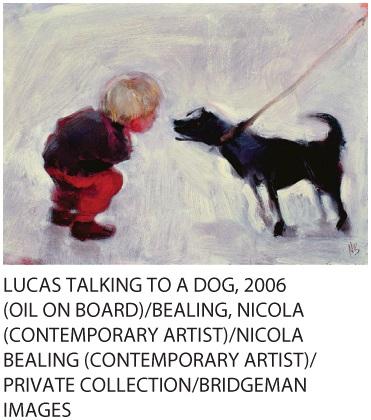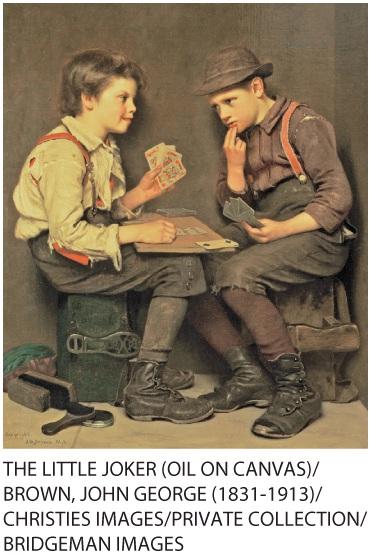Lustful
Desires: Professors of Westview University, Book 1
R. M. Grey
https://ebookmass.com/product/lustful-desires-professors-of-westviewuniversity-book-1-r-m-grey/
ebookmass.com
Island Thinking: Suffolk Stories of Landscape, Militarisation and Identity 1st ed. 2020 Edition Sophia Davis
https://ebookmass.com/product/island-thinking-suffolk-stories-oflandscape-militarisation-and-identity-1st-ed-2020-edition-sophiadavis/ ebookmass.com
Black Thorn Sarah Hilary
https://ebookmass.com/product/black-thorn-sarah-hilary/
ebookmass.com
First Aid for the Emergency Medicine Boards Third Edition 3rd Edition, (Ebook PDF)
https://ebookmass.com/product/first-aid-for-the-emergency-medicineboards-third-edition-3rd-edition-ebook-pdf/
ebookmass.com




Small Town Splurge: A Sweet K9 Handler RomCom (Hero Search and Rescue Book 2) Jenna Brandt
https://ebookmass.com/product/small-town-splurge-a-sweet-k9-handlerromcom-hero-search-and-rescue-book-2-jenna-brandt/
ebookmass.com

the National Institute for Child Health and Human Development, the National Institute for Mental Health, and the National Science Foundation to support her research. She waslead author of the volume Societal Contexts of Child Development, which won the 2014Society for Research on Adolescence Social Policy Award for Best Edited Book, and of a new book, Endingthe Physical Punishment of Children: AGuide for Clinicians and Practitioners. She wasan Associate Editor at the journal Developmental Psychology and isPresident-Elect of the Society for Child and Family Policy and Practice, which isDivision 37of the American Psychological Association. She isan internationally recognized expert on the effects of physical punishment on children, and her research on the topic hasbeen recognized with a Lifetime Legacy Achievement Award from the Center for the Human Rightsof Children at Loyola University Chicago and the Nicholas HobbsAward from Division 37of the American Psychological Association
NANCYEISENBERGisRegents’ Professor of Psychology at Arizona State University. Her research interestsinclude social, emotional, and moral development, aswell associalization influences, especially in the areasof self-regulation and adjustment. She haspublished numerousempirical studies, aswell asbooksand chapterson these topics. She hasalso been editor of Psychological Bulletin and the Handbook of Child Psychology and wasthe founding editor of the Society for Research in Child Development journal Child Development Perspectives Dr Eisenberg hasbeen a recipient of Research Scientist Development Awardsand a Research Scientist Award from the National Institutesof Health (NICHD and NIMH). She hasserved asPresident of the Western Psychological Association and of Division 7of the American Psychological Association and ispresident-elect of the Association for Psychological Science. She isthe 2007recipient of the Ernest R Hilgard Award for a Career Contribution to General Psychology, Division 1, American Psychological Association; the 2008recipient of the International Society for the Study of Behavioral Development Distinguished Scientific Contribution Award; the 2009recipient of the G. Stanley Hall Award for Distinguished Contribution to Developmental Psychology, Division 7, American Psychological Association; and the 2011recipient of the William James Fellow Award for Career Contributionsin the Basic Science of Psychology from the Association for Psychological Science
Methods for StudyingChild Development
The Scientific Method
Contextsfor Gathering Data About Children
Correlation and Causation
Research Designsfor Examining Children’sDevelopment
Ethical Issuesin Child-Development Research
CHAPTERSUMMARY

CHAPTER2 PrenatalDevelopment and the Newborn Period
PrenatalDevelopment
BOX 2.1 ACloser Look: Beng Beginnings
Conception
BOX 2.2 IndividualDifferences: Do GirlsOutnumber Boys?
Developmental Processes
Early Development
An Illustrated Summary of Prenatal Development
Fetal Experience and Behavior
Fetal Learning
Hazards to PrenatalDevelopment
Teratogens
BOX 2.3 Applications: Sudden Infant Death Syndrome
Maternal Factors
The Birth Experience
Diversity of Childbirth Practices
The Newborn Infant
State of Arousal
Negative Outcomesat Birth
CHAPTERSUMMARY

CHAPTER3 Biology and Behavior
Nature and Nurture
Genetic and Environmental Forces
BOX 3.1 Applications: Genetic Testing
Behavior Genetics
Quantitative GeneticsResearch Designs
Heritability
Molecular GeneticsResearch Designs
BOX 3.2 IndividualDifferences: Genetically Transmitted Developmental Disorders
Environmental Effects
Brain Development
The Neuron
The Cortex
Developmental Processes
BOX 3.3 ACloser Look: Mapping the Mind
The Importance of Experience
The Body: PhysicalGrowth and Development
Growth and Maturation
Nutritional Behavior
Vaccines
BOX 3.4 ACloser Look: Poverty and Health Disparities CHAPTERSUMMARY

CHAPTER6 Development of Language and SymbolUse
Language Development
The Componentsof Language
What IsRequired for Language?
BOX 6.1 Applications: Two LanguagesAre Better Than One
The Process of Language Acquisition
Speech Perception
Word Segmentation
Preparation for Production
First Words
BOX 6.2 IndividualDifferences: Language Development and Socioeconomic Status
Putting WordsTogether
BOX 6.3 Applications: iBabies: Technology and Language Learning
Conversational Skills
Later Development
TheoreticalIssues in Language Development
Chomsky and the Nativist View
Ongoing Debatesin Language Development
BOX 6.4 ACloser Look: “I Just Can’t Talk Without My Hands”: What GesturesTell UsAbout Language
Nonlinguistic Symbols and Development
Using SymbolsasInformation
BOX 6.5 IndividualDifferences: Developmental Language Disorders
Drawing and Writing
CHAPTERSUMMARY

CHAPTER7 ConceptualDevelopment
UnderstandingWho or What Dividing Objectsinto Categories
Understanding Oneself and Other People
BOX 7.1 IndividualDifferences: Children with Autism Spectrum Disorders(ASD) Knowledge of Living Things
BOX 7.2 IndividualDifferences: Imaginary Companions
UnderstandingWhy, Where, When, and How Many Causality
BOX 7.3 ACloser Look: Magical Thinking and Fantasy
Space
BOX 7.4 IndividualDifferences: Development of Spatial Conceptsin Blind and Visually Impaired People
Time
Number
RelationsAmong Understanding of Space, Time, and Number CHAPTERSUMMARY

The Development of Emotion Regulation
The Relation of Emotion Regulation to Social Competence and Adjustment
The Role of Family in EmotionalDevelopment
Parents’ Expression of Emotion
Parents’ Socialization of Children’sEmotional Responses
Temperament
Measuring Temperament
Determinantsof Temperament
How Temperament Fitswith Environment
MentalHealth, Stress, and InternalizingMentalDisorders
Stress
BOX 10.3 Applications: Toxic Stressand Adverse Childhood Experiences
Internalizing Mental Disorders
BOX 10.4 IndividualDifferences: Gender Differencesin Adolescent Depression
CHAPTERSUMMARY

CHAPTER11 Attachment to Others and Development of the Self
The Caregiver–Child Attachment Relationship
Attachment Theory
Measurement of Attachment Security
BOX 11.1 ACloser Look: DoesChildcare Interfere with Attachment?
Sourcesof Individual Differencesin Attachment Styles
BOX 11.2 Applications: Interventionsto Improve Attachment
Attachment and Social-Emotional Development
The Self Self-Concept
BOX 11.3 IndividualDifferences: Development of Self-AwarenessAmong Autistic Children
BOX 11.4 ACloser Look: IsToo Much Praise Bad for Self-Esteem?

CHAPTER12 The Family
Family Structure
Changesin Family Structure in the United States
BOX 12.1 IndividualDifferences: TeenagersasParents
Same-Sex Parents
Divorced Parents
Stepparents
Family Dynamics
Parenting
BOX 12.2 Applications: Should ParentsSpank Their Children?
Differencesin Mothers’ and Fathers’ Interactionswith Their Children
The Child’sInfluence on Parenting
Sibling Relationships
Child Maltreatment
Risksfor Maltreatment
Consequencesof Maltreatment
Family Socioeconomic Context
BOX 12.3 Applications: Preventing Child Maltreatment
Cultural Contexts
Economic Contexts
BOX 12.4 ACloser Look: Homelessness
Parents’ Work Contexts
Childcare Contexts
BOX 12.5 Applications: Family-Leave Policies
Cognitive Abilitiesand Academic Achievement
Interpersonal Goalsand Communication
Aggressive Behavior
BOX 15.3 Applications: Sexual Harassment and Dating Violence
CHAPTERSUMMARY

CHAPTER16 Conclusions
Theme 1: Nature and Nurture: AllInteractions, Allthe Time
Nature and Nurture Begin Interacting Before Birth
Infants’ Nature ElicitsNurture
Timing Matters
Nature DoesNot Reveal Itself All at Once
Everything InfluencesEverything
Theme 2: Children Play Active Roles in Their Own Development
Self-Initiated Activity
Active Interpretation of Experience
Self-Regulation
Eliciting Reactionsfrom Other People
Theme 3: Development Is Both Continuous and Discontinuous
Continuity/Discontinuity of Individual Differences
Continuity/Discontinuity of Overall Development: The Question of Stages
Theme 4: Mechanisms of DevelopmentalChange
Biological Change Mechanisms
Behavioral Change Mechanisms
Cognitive Change Mechanisms
Change MechanismsWork Together
Theme 5: The SocioculturalContext Shapes Development
Growing Up in Societieswith Different Practicesand Values
Growing Up in Different Timesand Places
Growing
Theme 6: IndividualDifferences
Breadth of Individual Differencesat a Given Time
Stability Over Time
Predicting Future Individual Differenceson Other Dimensions
Determinantsof Individual Differences
Theme 7: Child-Development Research Can Improve Children’s Lives
Implicationsfor Parenting
Implicationsfor Education
Implicationsfor Helping Children at Risk
Improving Social Policy
Glossary
References
Name Index
Subject Index
Among the applicationsthat are summed up in these boxesare genetic testing, which probesthe depthsof an individual’sgenetic makeup; board-game proceduresfor improving preschoolers’ understanding of numbers; the Carolina Abecedarian Project; interventionsto reduce child abuse; programs, such asPATHS, for helping rejected children gain acceptance from their peers; and Positive Youth Development and Service Learning Programs, which seek to reduce problem behaviorsand increase positive behaviors.
“Individual Differences” boxesfocuson populationsthat differ from the norm with regard to the specific topic under consideration, or on variationsamong children in the general population. Some of these boxeshighlight developmental problemssuch asautism, ADHD, dyslexia, specific language impairment, visual impairments, and conduct disorder, whereasothersfocuson differencesin the development of children that center on attachment status, gender, socioeconomic status, and cultural differences.
“A Closer Look” boxesexamine important and interesting research in greater depth than would otherwise be possible: the areasexamined range from brain-mapping techniquesto explorationsof gender nonbinary identity to the developmental impact of homelessnessand disparitiesbetween poverty and health.
In place of the brief section summariesused in previouseditions, we cap each major section with a thought-provoking Review Question. These promptsserve the dual purpose of encouraging deeper thinking about the material and of forcing the student to pause before diving ahead in the chapter.
We have also retained a number of other featuresintended to improve students’ learning. These featuresinclude boldfacing key termsand supplying definitionsboth within the immediate text and in marginal glossaries; extensive, bulleted Summariesat the end of each chapter; Test Yourself quizzesfor studentsto quickly test their comprehension and understanding of the material in preparation for examsor simply asa way to review; and Critical Thinking Questions intended to promote deeper consideration of essential topics.
In every edition, we endeavor to addressnew developmentsin the field, bring in fresh examplesdrawn from current events, and incorporate research in areasthat have become increasingly important in recent yearsfor both the students of child development and the instructorswho teach it. In addition to these goals, we have sought in thissixth edition to balance the inclusion of thisnew material with judiciouscutsand consolidation of coverage. We have worked to remove outdated and lessrelevant material, eliminate overlapping coverage acrosschapters, and present core conceptsin a more concise manner. The result isa leaner, more visually appealing text that deliversthe same wealth of coverage found in prior editions, but in a manner that we hope you, and more importantly your students, will find more manageable and digestible.
In the following paragraphs, we outline some of the most significant highlightsof the sixth edition. We hope you find it to be useful and appealing.
Chapter1 Chapter1
Updated presentation of long-term consequencesand later findingsin Box 1 1: The Romanian Adoption Study Updatesand revisionsmade throughout the presentation section on Enduring Themesin Child Development, notably in Theme 2: The Active Child (expanded discussion of play), Theme 4: Mechanismsof Change (additional examplesand recent research added), and Theme 5: The Sociocultural Context (updated discussion of SES).
Chapter2 Chapter2
Exposition updated and tightened throughout, most notably in the discussionsof conception, early and prenatal development, teratogens, infant sleep, and crying.
Updated the subsection on Fetal Experience, including a new discussion of prenatal visual preferencesand of phylogenetic continuity.
Updatesto the discussion of Drugsand Maternal Factorsin the section on Teratogens, including a significant revision of the section on Maternal Emotional State
Updated and revised subsection on Intervention Programsincluded in the section on
Chapter3 Chapter3
Significant reorganization and update to the discussion of heredity in the section on Parents’ Genotype–Child’s Genotype.
Updated (and reduced length of) Box 3.1: Genetic Testing, with new content covering non-invasive prenatal testing. Expanded and updated discussion of methylation, including a new figure, and epigenetic effects.
In the section on Behavioral Genetics, revised and updated the discussion of Heritability, particularly the discussion of misconceptions, and expanded and updated the discussion of molecular geneticsresearch design with new coverage of candidate gene studies
In the section on Brain Development, added new figuresand expanded discussionsof arborization, neurogenesis, and synapse production and elimination.
New subsection on Vaccinesadded to section on Physical Growth and Development.
Chapter4 Chapter4
Opening section discussing Piaget’sTheory of Cognitive Development hasbeen shortened for a more concise presentation.
Presentation of Sociocultural Theorieshasbeen restructured and shortened.
New research added to the discussion of executive functioning in the section on Information-Processing Theories.
Chapter5 Chapter5
Section on Cognition hasbeen eliminated, with topicsdistributed to other sectionsin the chapter (aswell asto Chapter 7).
Section on Learning hasbeen retitled Learning and Memory, and a corresponding subsection on Memory hasbeen added.
Expanded and updated discussion of Taste and Smell.
New Table 5 1charting Infant Reflexeshasbeen added to thissection
Chapter6 Chapter6
All Boxesshortened and updated with current research.
Section on Componentsof Language hasbeen revised to be more concise.
Chapter7 Chapter7
Expanded discussion of causal understanding now includesa discussion of object knowledge (adapted from material previously found in Chapter 5).
Expanded discussion of Naïve Psychology in Infancy, with additional material previously found in Chapter 5, now adapted and updated for thissection.
Chapter8 Chapter8
Updated discussion of the impact of technology, such asvideo games, on fluid intelligence
Updated discussion of the effectsof poverty on measuresof intelligence and academic achievement, including a new figure showing current poverty ratesacrossseveral countries.
Discussion of intervention programsupdated to reflect recent findings.
Revamped and shortened presentation of Gardner’stheory of multiple intelligencesand Sternberg’stheory of successful intelligence
Updatesthroughout the section on Acquisition of Academic Skills, including new coverage of the simple view of reading and new research on math achievement and math anxiety.
HowChildren Develop, Sixth Edition, and LaunchPad can be ordered together with ISBN-10: 1-319-26955-9/ ISBN-13: 978-1319-26955-5
LaunchPad for HowChildren Develop, Sixth Edition, includesthe following resources:
The LearningCurve quizzing system wasdesigned based on the latest findingsfrom learning and memory research. It combinesadaptive question selection, immediate and valuable feedback, and a game-like interface to engage studentsin a learning experience that isunique to them. Each LearningCurve quiz isfully integrated with other resourcesin LaunchPad through the Personalized Study Plan, so studentswill be able to review with Worth’s extensive library of videosand activities. And state-of-the-art question analysisreportsallow instructorsto track the progressof individual students, aswell astheir classasa whole.

An interactive e-book allowsstudentsto highlight, bookmark, and make their own notes, just asthey would with a printed textbook. Digital enhancementsinclude full-text search and in-text glossary definitions. Student Video Activities include more than 100engaging video modulesthat instructorscan easily assign for student assessment Videoscover classic experiments, current newsfootage, and cutting-edge research, all of which are sure to spark discussion and encourage critical thinking
Deepintegration isavailable between LaunchPad productsand most learning management systems, including Blackboard, Brightspace by D2L, Canvas, and Moodle. These deep integrationsoffer educatorssingle sign-on and gradebook sync, now with auto refresh. These best-in-classintegrationsoffer deep linking to all Macmillan digital content at the chapter and asset levels, giving professorsmaximum flexibility within their LMS.
AchieveRead&Practice AchieveRead&Practice
Achieve Read & Practice marriesMacmillan Learning’smobile-accessible e-book with the acclaimed LearningCurve adaptive quizzing It isan easy-to-use yet exceptionally powerful teaching and learning option that streamlinesthe processof increasing student engagement and understanding. If studentsstruggle with a particular topic, they are encouraged to reread the material and answer a few short additional questions. The gradebook providesanalyticsfor student performance individually and for the whole class, by chapter, section, and topic, helping instructorsprepare for classand one-on-one discussions Instructorscan assign reading simply, studentscan complete assignmentson any device, and the cost issignificantly lessthan that of a printed book. Find out more about thisalternative to LaunchPad at http://macmillanlearning.com/readandpractice.
Presentation slidesare available in two formatsthat can be used asthey are or can be customized. One set includesall the textbook’sillustrationsand tables. The second set consistsof lecture slidesthat focuson key themesand termsin the book and include text illustrationsand tables. Both of these prebuilt PowerPoint presentationsare available through LaunchPad at launchpadworks com
PresentationVideos PresentationVideos
Worth’svideo clipsfor developmental psychology span the full range of topicsfor the child development course. With hundredsof clipsto choose from, thispremium collection includesresearch and newsfootage on topicsranging from prenatal development to the experience of child soldiersto empathy in adolescence. These clipsare made available to instructorsfor lecturing in the classroom and also through LaunchPad
Instructor’sResourceManual Instructor’sResourceManual
Written by Lynne Baker-Ward of North Carolina State University, and revised by Barinder Bhavra, thisinnovative Instructor’s Resource Manual includeshandoutsfor student projects, reading listsof journal articles, course-planning suggestions, and supplementary readings, in addition to lecture guides, chapter overviews, and learning objectives The Instructor’s Resource Manual can be downloaded in LaunchPad at launchpadworks com
MacmillanCommunity MacmillanCommunity
Macmillan Community isan online forum where teacherscan find and share favorite teaching ideasand materials, including videos, animations, images, PowerPoint slides, newsstories, articles, web links, and lecture activities. It isalso the home of Worth’sabundant social media content, including tweets, blog posts, webinars, and more! Browse the site and share your favorite materialsfor teaching psychology at https://community macmillan com
Assessment
The Test Bank for HowChildren Develop by ChrysalisWright of the University of Central Florida and Jill L Saxon features more than 100multiple-choice and essay questionsfor each chapter. Each question iskeyed to the textbook by topic, type, and level of difficulty. The Test Bank isavailable through LaunchPad at launchpadworks.com.
Acknowledgments Acknowledgments
So many people have contributed (directly and indirectly) to thistextbook that it isimpossible to know where to start or where to stop in thanking them. All of ushave been given exceptional support by our spousesand significant others Jerry Harris, Xiaodong Lin, Seth Pollak, and Andrew Gershoff and by our children Benjamin Clore; Michael Harris; Todd, Beth, and Aaron Siegler; Avianna McGhee; Eli and Nell Pollak; and Noah and Ella Gershoff aswell asby our parents, relatives, friends, and other loved ones. Our advisorsin college and graduate school, Richard Aslin, Ann Brown, LesCohen, Ted Dix, Harry Hake, George Holden, Robert Liebert, Jim Morgan, Paul Mussen, Elissa Newport, and Jim Pate, helped to launch our careersand taught ushow to recognize and appreciate good research.
We also have all benefited from collaboratorswho shared our quest for understanding child development and from a great many exceptionally helpful and generouscolleagues, including Larry Aber, Karen Adolph, Martha Alibali, Renee Baillargeon, Sharon Carver, Zhe Chen, Robert Crosnoe, Richard Fabes, Cindy Fisher, Aletha Huston, Andrew GroganKaylor, Melanie Jones, David Klahr, Patrick Lemaire, Casey Lew-Williams, Angeline Lillard, John Opfer, Elizabeth Planalp, Karl Rosengren, Kristin Shutts, Tracy Spinrad, David Uttal, CarlosValiente, and Erica Wojcik. We owe special
